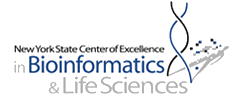ABOUT
The QSR is pioneering an approach to the analysis of biomedical data through the application of ontological techniques derived from the field of Geographic Information Systems and qualitative spatiotemporal reasoning, providing a new avenue to the representation of canonical anatomy, and the processing of X-ray, MRI and other forms of image data, as well as signal data such as EEGs. The qualitative ontology-based methodology offers a very natural and efficient approach to the analysis of spatio-temporal phenomena that are difficult to quantify, such as the distinction between normal and non-normal waveforms or the tracking of the development of tumors over time.
QUALITATIVE REPRESENTATIONS
Qualitative spatiotemporal representations are logic-based representations of qualitative spatial relations and their change over time. Qualitative spatiotemporal representation and reasoning techniques take advantage of the fact that, despite the variations and changes in size, shape, distance, and spatial arrangement, all normal instances of the same biological species are qualitative copies of each other (1) at the macroscopic anatomical level, as well as (2) at the level of electrophysiologic measures that represent processes that occur in anatomical structures.
Many of the facts represented in biomedical ontologies are qualitative rather than quantitative. For example, it is impossible to quantitatively describe all aspects of the shape and the spatial arrangement of anatomical structures in canonical anatomy. There is too much variation between the actual shapes and metric arrangements of particular structures among particular human beings. Moreover, it is the very nature of many anatomical structures to change in shape and spatial arrangement over time: the heart beats, the jaw opens and closes, etc.
Similarly, it is very difficult to quantitatively describe all the aspects of shape and spatial arrangement of curves representing electrophysiologic measures of processes occurring in anatomical structures. Visual evoked potential (VEP) graphs, for example, represent the variation of activation in the certain parts of the brain. These graphs are similar in a certain qualitative sense but are often very noisy and, even under ideal and almost identical conditions, there is significant variation among measures taken from normal human beings.
METHODOLOGY
REPRESENTATIONS AND ONTOLOGY
The essence of qualitative representations is to find ways of representing continuous properties of the world by discrete systems of symbols. This is where formal ontology comes into play. Formal ontology assists in discretizing continuous domains in such a way that significant properties of the original continuous domain are preserved in the discretized representation.
For example, to qualitatively model the behavior of water at different temperatures the continuous domain of temperature is discretized by introducing landmark values. There is temperature landmark 1 (TLM1), viz., the temperature at which water changes from its solid state to its liquid state, and temperature landmark 2 (TLM2), viz., the temperature where water changes from its liquid state to being a gas. Now, these landmark values bound intervals. There is the interval of temperatures at which water is solid (call it Ti1), the interval of temperatures at which water is liquid (Ti2), and the (half open) interval at which water is a gas (Ti3). In a qualitative model, the behavior of water at different temperatures is described only by referring to the landmark values and the intervals bounded by those values.
An important point is that the landmarks are not chosen arbitrarily. The landmarks represent significant changes in the domain at hand, while within the intervals between landmarks no significant changes occur. Thus, qualitative representations focus on ontologically salient features. For many purposes, this qualitative representation of water at different temperatures will be sufficient. For example, in order to transport bottled water from one place to another the exact temperature of the water is irrelevant as long as it does not freeze or change to its gas state since in both cases the bottled water will destroy their containers.
SIGNIFICANT RESULTS
Thus, with the assistance of formal ontology, the methodology of qualitative spatiotemporal reasoning makes spatio-temporal phenomena easier to quantify and facilitates the integration of heterogeneous data. Currently, the methodology is being investigated by QSR researchers in areas such as joint and muscle pathology, tumor staging, and in the analysis of visual evoked potential (VEP) and other kinds of electrophysiological signal data.
DIRECTOR
 Thomas BITTNER
Thomas BITTNER
bittner3@buffalo.edu
Phone: (716) 881-7905
Fax: (716) 849-6890
Thomas Bittner is a Professor of Philosophy in the Department of Philosophy at the University at Buffalo who specializes in formal ontology and its applications in geospatial and biomedical informatics. His research interests include bioinformatics, formal ontology, qualitative spatial, temporal, and spatio-temporal reasoning, approximate reasoning, representation and reasoning about vagueness and indeterminacy, medical information science, theoretical foundations of geographic information systems, spatial information science, and formal geography
QSR RESEARCHERS
Along with Thomas Bittner, other QSR researchers are engaged in the analysis of biomedical data through the application of ontological techniques derived
from the field of Geographic Information Systems and qualitative spatiotemporal reasoning.
RESEARCHERS IN THE QSR
QSR PUBLICATIONS
Publications by members of the QSRRelated Publications



